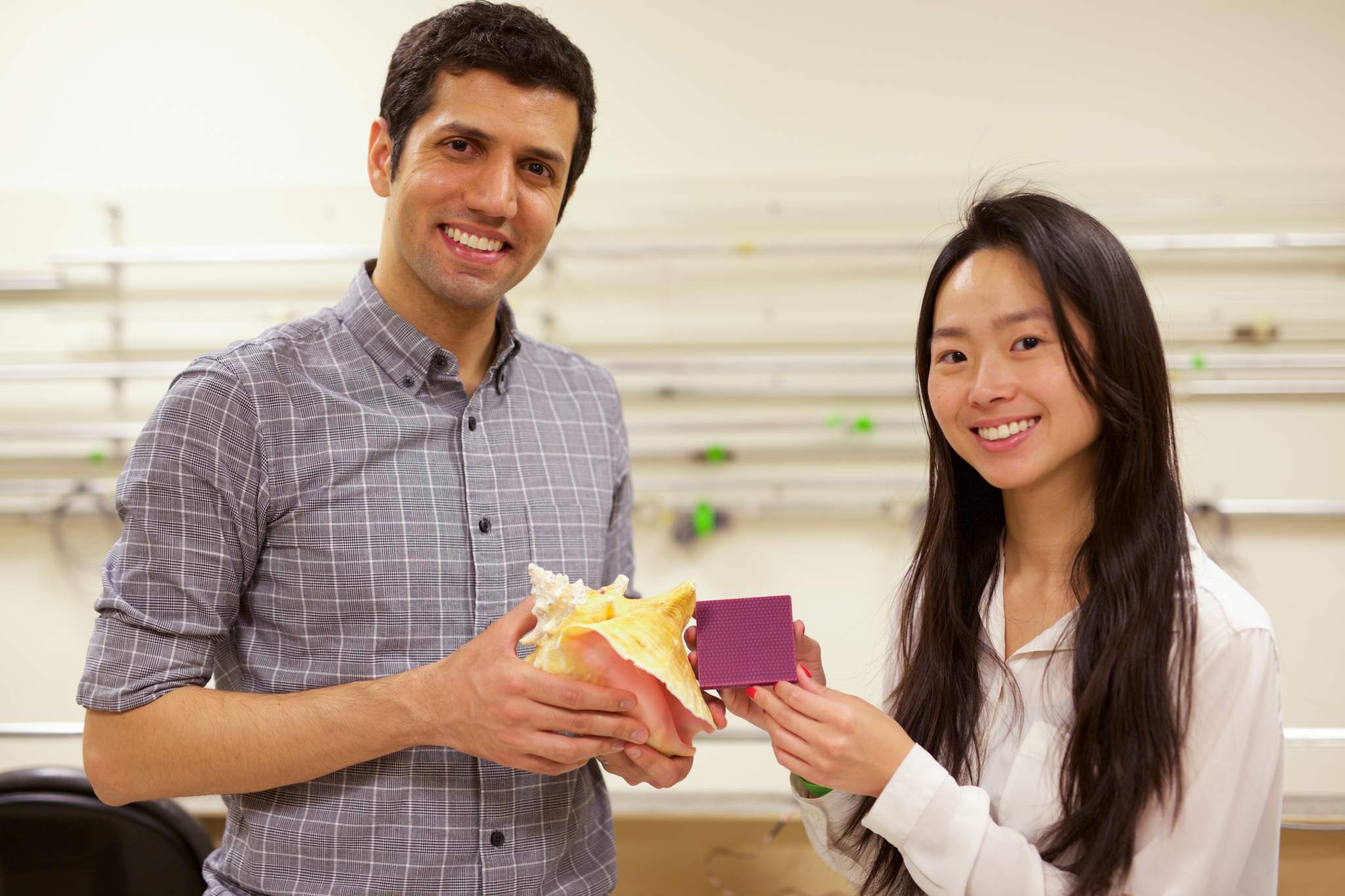Researchers at MIT have used 3D printing to replicate the innate toughness of a conch shell.
The research found a 3D printed structure was up to 85% stronger by mimicking the criss-crossed layers typically found in the shell. The researchers, Grace Gu, Mahdi Takaffoli, and McAfee Professor of Engineering Markus Buehler, believe the material has potential application for use in body armor.
The full article, titled ‘Hierarchically Enhanced Impact Resistance of Bioinspired Composites’, has been published in Advanced Materials.

Advanced toughness
To begin the project, the MIT researchers evaluated a conch shell for toughness properties. Toughness, in relation to materials, relates to its ability to absorb and dispel energy without fracturing. Upon analyzing a conch shell’s characteristics, the research team found its superior toughness was contained in the layers of alternating grains. This three-tiered structure, according to the paper, means cracks and fractures find it difficult to spread through the layers.
Gif shows the material 3D printing on a Stratasys machine. Images via MIT.
The researchers subsequently sought out to replicate this structure using a 3D printer. Once simulating the shell’s structure on a computer, the team used a Stratasys Objet 500 3D printer to create a material which simulated a conch’s multi-layer structure.
MIT researchers have turned to 3D printing in the past by using the technology to showcase the intricate geometry of graphene.
Gif shows impact testing using a Drop Tower. Images via MIT.
Drop Tower testing
In order to evaluate the toughness of the 3D printed conch-like material, with a base material comparison, the researchers used a Drop Tower. Performing impact tests using the Drop Tower showcased the multi-layered material’s ability to dispel energy with minimal cracking or fracturing. These tests showed the conch structure was 85% better at resisting impact and 70% better than a traditional carbon fiber arrangement which uses interlocking threads.
Researchers at McGill University in Canada have also demonstrated positive results by 3D printing ABS materials in a jigsaw shape.

Conch shell applications
MIT’s researchers believe the material developed has the potential to create advanced body armor or helmets. Particularly since the use of 3D printing can be complimented with the use of 3D scanning. For this reason, the researchers explain the possibility of creating individualized helmets or body armor which would have both the optimal fit for the user and have advanced properties due to the conch-like layers of the printed material.
Similarly, American football equipment manufacturer Riddell has announced it will use 3D scanning technology to create bespoke ‘Precision-Fit’ helmets. As reported, the use of 3D scanning hopes to improve fit and performance by reducing pockets of air inside a helmet.
Perhaps in the future, for added resistance, the manufacturer could incorporate the conch-like structure of MIT’s 3D printed material.
For all the latest 3D printing news, subscribe to our newsletter, follow us on twitter and like us on Facebook.
Featured image shows the results of the impact testing on the base material. Photo via MIT.



